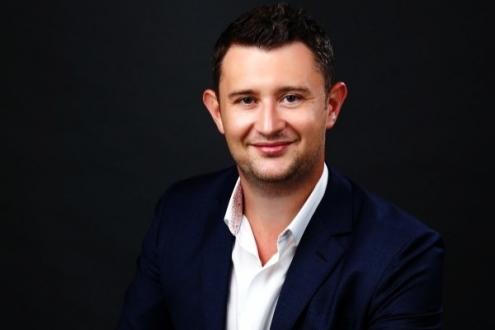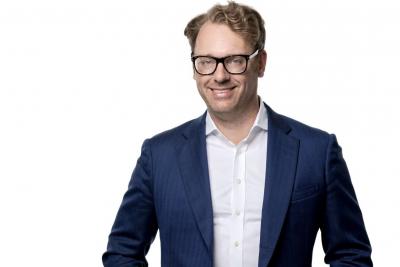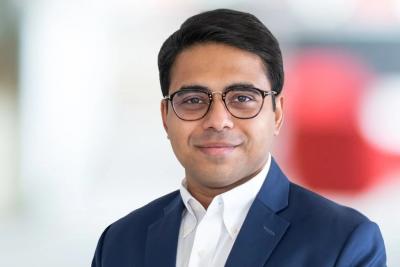From Custody to Web3: How to Build and Scale Digital Asset Business Models for Tomorrow’s World

Feb 16, 2023
Richard Swainston is the APAC Market Director at Metaco and offered delegates a lively and informative vision of the future of digital assets at the Hubbis Digital Assets Forum on November 30 in Singapore. He reviewed how the private banks and wealth managers have been approaching digital assets, he considered the factors leading to crypto and digital asset adoption, he evaluated the bank-grade infrastructure requirements to securely manage digital assets at scale, and he looked into his crystal ball to imagine what is next beyond custody and trading, such as the expansion of tokenisation, NFTs, staking, yield generation, and Web3.
A brief introduction to Metaco
Metaco is a Swiss company that has recently launched its APAC headquarters in Singapore, attracted to those shores by the island republic’s stability, the solid history for financial innovation, access to great technology talent and partners, access to Metaco’s client base, and rapidly increasing activity in the digital asset and crypto space.
Today, Metaco provides technology infrastructure to help clients manage and support digital assets including, custody, trading, token issuance and management, structured products, and a bridge to DeFi through seamless management of smart contracts.
Driving towards global standards
Metaco has established itself as the institutional standard for digital asset infrastructure. “We are a market-leading platform trusted by global Tier 1 banks, custodians, and exchanges,” Richard told guests.
Metaco is an enterprise technology company whose mission is to enable financial and non-financial institutions to securely build their digital asset operations. The company’s core product, Harmonize™, is a mission-critical orchestration platform for digital assets. From asset-agnostic custody and trading to tokenization, staking and smart contract management, the platform seamlessly connects institutions to the broad universe of decentralized finance (DeFi) and decentralized applications (Web3 Dapps).
The firm entered this digital asset space early on in 2015, focusing on technology for the entire digital asset value chain, from custody to DeFi, and with strong expertise in both crypto/blockchain as well as banking and banking software.
Asia and beyond
Metaco has achieved a solid track record, having been working with some of the largest Tier 1 banks across the world for several years and already with some leading Singapore institutions.
Singapore was chosen as the ideal location for Asia operations, being a technology hub for the APAC region, with the right type of regulatory support, strong talent available, and a rapidly expanding digital asset and financial sector ecosystem. He pointed to Singapore as having become the focal point in the region for digital assets and cryptocurrencies and is attracting more and more of the clients that Metaco either works with or hopes to partner with for the future.
“We were founded with the objective of providing underlying foundational infrastructure mainly for self-custody technology to build digital asset services in banking, such as Tier 1 financial institutions,” he reported.
“There are many operational challenges that large institutions face when moving into this space, and also as they scale their businesses in this area. Hence my topic today is titled ‘From Custody to Web3’ and is about how to build and scale Digital Asset business models.”
Stop the music
He added that in light of the FTX debacle, he would also address the bank-grade infrastructure requirements to securely manage and scale digital assets. He said he comes from the viewpoint that what has happened is arguably an essential stage in the digital assets’ journey. “It is making us all reflect and improve, but actually without the sort of spill over effects of previous mainstream financial crises. In short, we do not want to overstate the near-term impact and underestimate the long-term benefits.”
“Bubbles are an essential stage in the development of transformative technologies.” - William Janeway.
Custody is the key to the proposition
He moved on, remarking that getting custody right is key to the future of the digital assets industry. “But that is only part of it,” he said. “Technical security is one thing, but we also need to focus on the mitigation of operational risk, more robust controls, and better governance.”
He also observed that as the digital assets ecosystem and numerous new entrants hurtled headlong into the future during the first wave, from 2010 to 2020 roughly, the players were often fuelled, like FTX, by millions and often hundreds of millions of venture capital and also leading institutional money chasing these blue skies on the distant horizons.
The market’s evolution
“During phase one, there was insufficient regulatory oversight,” Richard observed, “so regulators have been playing catch up, and they still are, but as the market evolves, we are seeing a shift in the second wave to market definers, the 2020 to roughly 2030 phase, we estimate, drawing the top tier of regulated institutions to invest in the right infrastructure and far more robust systems and technologies.”
He explained that during this second wave, these leading mainstream financial institutions now seek more complex and stronger custody setups, they cannot tolerate any single point of failure, while regulation is accelerating, and will become clearer and tighter. “We believe a lot of this will be influenced by the top tier banks and they can also help to set the standards for the future,” he asserted.
Into the future…
He also pointed to the third wave, likely to emerge from 2030 onwards. He said this where the mid-market banks, intermediaries and corporates take up a broad adoption of digital assets, with no trade-offs around security, with global, interoperable regulatory standards, and where capital markets move on-chain for all asset classes, and when stable-coins are widely adopted. This third wave from an estimated 2030 to 2035 could see digital assets explode to hundreds of trillions of dollars equivalent of activity.
“This opens a huge opportunity not just to the incumbents in the industry, but everyone else out there,” he stated. “And wallet services & custody are foundational to this future, and to unlocking all the other market opportunities. Accordingly, getting this right from the start is essential, so you can scale into the future with optionality. You might start with the simple proposition of cryptocurrency, and then add in other services, such as trading, payments, Loyalty or Reward programmes, then tokenised securities and so forth.”
Governance, policy, and regulation
But as this takes place, it all becomes much more critically complicated at the operational risk and governance levels. “Custody now needs to involve multiple key management strategies, but key management is not enough in itself; it is how you manage everything else outside of that, such as platform governance, internal policy frameworks, accounting, multi-jurisdictional standards and compliance, and other key elements.”
He concluded with what he called some genuinely felt self-promotion. “The type of distributed governance, segregation of duties, and other protocols that must be followed if we want to avoid future crises are core to the Metaco Harmonize™ platform,” he stated. “And that is why we are working with these top tier mainstream banks and other financial institutions, and why we are fast becoming effectively a global standard-bearer for institutional digital asset custody and orchestration.”
For further reading on Metaco and Richard’s insights, see these Hubbis links:

APAC Market Director at Metaco

More from Richard Swainston, Metaco
Latest Articles






